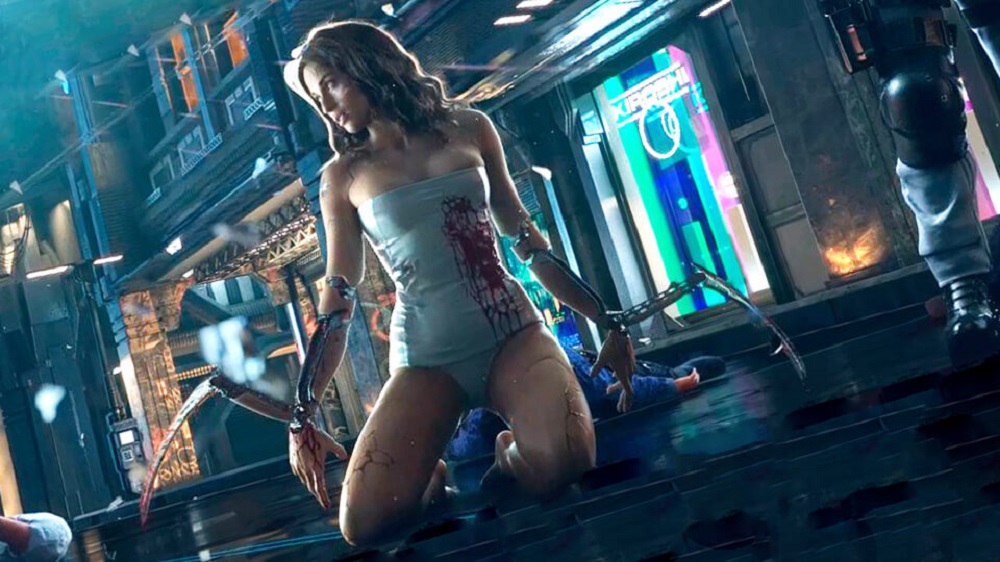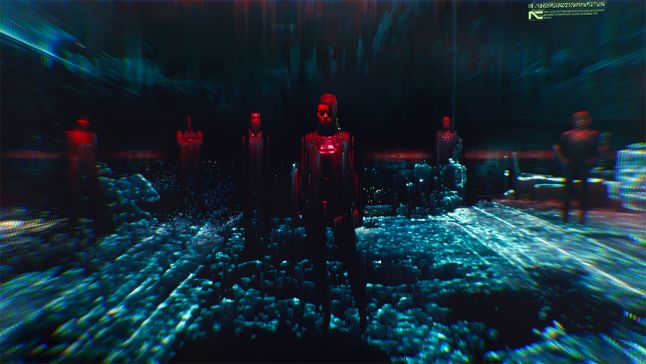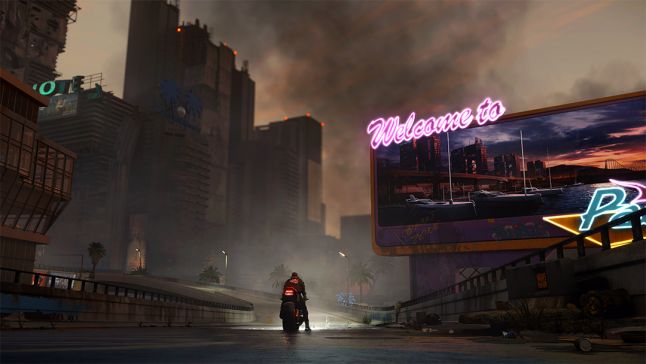From Witcher 3 to Cyberpunk: the evolution of CD Projekt quest design
- Transfer

The Witcher 3 is known for its excellent quest design, but the game developer CD Projekt Red promises to develop and improve a proven approach in his new Cyberpunk 2077 project .
At E3 2019, the director of the quest department, Mateusz Tomashkevich, told us what he learned while managing the development of the Cyberpunk 2077 quests , and told us what difficulties were involved in creating a more non-linear RPG design.
What has changed in your life as a director of the quest department since the announcement of work on Cyberpunk 2077 ?
A lot has changed, I came from the Thronebreaker: The Witcher Tales project , and I had to catch up with the team, understanding everything that we have: estimates, goals, and so on. This project is special for me, compared to The Witcher 3 , for example, in that we no longer strive to simply combine a rich branching narrative with an open world - this time we will add a new layer of nonlinearity - gameplay nonlinearity .
We add this whole layer related to the skills that the player chooses during the passage, with the life paths that the player chooses when creating the character. All this we use in various missions.
You saw that this year we wanted to emphasize precisely this aspect. Therefore, we spent so much time at the exhibition to show everyone that there are different ways of completing missions. You can take advantage of stealth or work your way through weapons - you choose.
There are different routes that can be unlocked depending on the skills in which the player invested his time. There are different phrases in the dialogs, depending on the skills in which the player invested time, and on his chosen life path. And all this influenced the design of the game.
What do you think your quest design department has learned by implementing quests based on systems that they cannot control?
Firstly, we have greatly changed our view of quests and how we should direct the player, how to implement these missions. In particular, we now not only take into account the possible ways the player can go from the point of view of the plot (which was important for us in The Witcher 3 ), now we need to think about how to create events and sequences that provide more interesting, diverse ways for different skill sets that players can take advantage of. We did not do this in The Witcher 3 .
For example, battles in The Witcher 3they were like "black boxes" inserted into the gameplay. It was enough just to create an NPC, and the rest happened by itself. The player simply fought them with swords, signs or bombs, and the result was the same.

This time, a great relationship between different departments of the studio is needed - with level designers or designers of encounters. From the point of view of the devices used, we are thinking about how to create a level in such a way that it is interesting and the player understands what paths it can be taken, and also think about how to combine this with a narrative and how to make the system work so that it does not interfere the plot of the game.
Cynics may say that this slows down the workflow. What helped you overcome logistical difficulties when working on this system?
I think that the most difficult thing is that different departments had to start working very closely with each other. At Witcher, the quest designer was the master of his part of the game. He implemented almost everything in this area. He could call it his property - very few could influence us. If the whole level was changed for artistic reasons, then this affected our department, but gameplay designers could rarely interfere with us.
If you work in very close collaboration, then the different parts of the work overlap. For example, quest demos, face designers, and level designers worked together on the demo shown today. Therefore, if they do not communicate well with each other in carrying out their part of the work, this creates problems for the rest.
Therefore, I believe that the biggest difficulty here is ensuring the correct exchange of information, the joint creation of this part of the game and the desire not to spoil the work of others . It may seem simple or commonplace, but in reality it is not. This requires a lot of effort from all departments.
How often do your departments communicate with each other? Have more meetings appeared in the schedule, are departments planning meetings on their own to keep abreast of the work of others?
We tried various approaches. One solution was daily planning. Then at some stage we decided to make them not daily, because otherwise too many meetings would turn out. In addition, we brought people from the right departments in one office to make it easier for them to communicate with each other.
We have weekly meetings where people talk about the problems they face, about the global issues that need to be addressed between departments, so that we can help them with this. In addition, we motivate people and organize missions for all departments.
They all gather in one room, and then go through the entire mission, discuss problems and what they would like to do. We also take other measures.The most important of these is daily communication between departments. We convey to people the thought that every time they change something, it can affect others. It is necessary to inform them of changes, even if it turns out to be not important for them. At best, they will notice where problems may arise or important aspects may appear.
I repeat, it sounds corny, but it is not. People tend to think that something should be obvious or not important to others, because they do not see a possible chain of consequences. But when they begin to communicate with other people, it becomes clear - yes, it changes a lot, it is extremely important to tell others about the changes.

Death is still an opportunity for the player in Cyberpunk 2077 to fail, but have you thought about other ways the player can fail and still continue to move forward? Something similar was a design feature of the Cyberpunk desktop RPG .
There is a rule in all our projects. This rule always applies to the storyline — the player cannot fail in the quest because of his choice. We consider selected options as individual results. The only way a player can fail is to die.
When you start design, this rule pretty much restricts. But quite an interesting result follows from it: the game seems more organic - we need to think through all the different possibilities and outcomes. This does not seem restrictive, but gives players more freedom of action. This rule creates the feeling that the world is reacting to what the player is doing, instead of saying, "Do not do this, this is wrong."
We can allow players to fail side missions, but again present this as the outcome of their actions. That is, if a player fails, he should not start over, it is more like a statement “you failed the case”. Let's say someone needs to be escorted, and he died along the way. This will have its consequences. Thanks to this, the game feels more organic and it makes the player think "yes, in a desktop RPG everything would be exactly the same." The game master does not say: "So, you killed the main NPC and now you need to start the adventure anew." He is trying to consider the situation and think about how to continue the story.
Possibility of choice and expressiveness were important attractive moments of the game. Quests are also a tool for game designers, which allows players to better integrate into the world, and at the same time, they allow you to express yourself through choice and other game moments. How did you, as a quest designer, adapt to the game a sense of expression of the player’s will and identification with the character?
There are many ways. The most obvious are the dialogs. There are various problems in the game when you interact with various quests and go through them. You may have your own view on these issues.
Some of them simply add atmosphere, others are important decisions that affect various aspects. When designing quests in our company, there was another rule-recommendation: to make the difference between these two types as blurry as possible. You should be wondering: “is this decision just adding atmospheric, or will it have far-reaching consequences?” According to our observations, if we do so, then the players tend to pay more attention to all the possibilities of choice, because they do not know which ones are important and which ones are just cosmetic.
This is the first. Secondly, not only the quest design itself is important, but the ability to customize the character during the passage of the game. As I said, in this project we added another layer called “life path”. This is something like the origin of the character. At the beginning of the game, when creating a player, the player chooses who he is: a street guy, a corporate servant or a loner.
These life paths create various advantages and disadvantages throughout the game. For example, when you interact with employees of corporations, you know how they behave, you know how to talk with them in order to achieve your goal. But on the streets, you as a representative of a corporation do not have any particular advantages.
Cyberpunk is a genre dealing with the concept of transhumanism, asking questions of consciousness and humanity that go far beyond our perceptions. In the demo, we saw a short jump into cyberspace. What tools have been found to be effective in creating a sense of going beyond what we have traditionally considered human?
The very concept of cyberspace in our game is quite interesting, because the general idea is that everyone interacting with cyberspace sees it in their own way. One can imagine that what he saw in the demo is how cyberspace sees V (the player’s character). But some other characters, such as Bridget, can see cyberspace in a completely different way.
The general sense is that cyberspace is such a vast amount of data for our brain that in order not to go crazy, find some meaning in it, it uses familiar symbols, its own knowledge and references. This is one approach. In our quests there are many branches relating to the various facets of transhumanism.
And, of course, we show a lot of this through dialogues. We show this through narratives through the environment (environmental storytelling), through the image of the city, through various stories about different characters and how they violate boundaries, and how they move forward, overcoming their human nature.

The surroundings of cyberpunk in this sense are very unusual and foreign to modern us - the ease with which people can replace their arms, legs or other parts of the body with cybernetic devices is completely normal for this society. We pay a lot of attention to this topic throughout the game.
For this, we use a standard narrative in various stories. We also have video content that touches on this topic closely, telling how society works and how normal things are in it. And, of course, a lot of advertising, announcements, you could see them in the demo. We created a bunch of content to bring this message to the player.
Related to this is our next question. Perhaps this goes beyond the scope of your field of work, but there is one advertisement in the game that has generated particularly active discussions by other developers.
Do you remember this ad? A drink advertisement that says “Mix it up”?
Yes of course.
We have not yet seen the full screen for selecting a character, he is not ready yet. The department that deals with them said that it was not done yet last year. The game will still have many changes. The development team was thinking of giving players a similar opportunity to select characters?
And if not, did the team think about the problem of having restrictions on how players can represent themselves?
[Note trans.: a transgender is shown on the Mix it up ad.]
Of course. It seems to me that this is a very subtle and important topic. We carefully thought over this aspect. In the finished game, we want to provide players with as many customization options as possible at the beginning of the game.
For example, we want that after choosing the type of body when creating the character, the player can, for example, use physical features when creating the face, which can be attributed to the male or female gender.
Or non-binary?
Or non-binary. The idea is to mix it all up and give players a choice. The same applies to the voice. We wanted to share all this so that players could freely choose. We are still working on it, everything is not as simple as it seems.
Last year, Patrick Millis told us that an excellent source for creating quests for him is to analyze his own life and tastes. Do you have similar stories, maybe not related to Cyberpunk and this world, that became the inspiration for the quest?
Personally, I am mostly inspired by other people's artwork. I watch a lot of movies and play heaps of games, including board games, and so on. Of these, I take the bulk of my inspiration. Real life is sometimes weirder than fictional situations. I have had many times when I would have been laughed at if I had suggested some kind of situation as a quest for our game.
People would tell me that this makes no sense or that this situation could not have arisen. Sometimes such things become good “bricks” from which a larger story can be built. I prefer to work with such things like this: I give designers the opportunity to briefly outline the situation in which we are trying to find a grain of something interesting, on the basis of which we can move on. It does not have to be a large-scale and long story, but it must be something memorable, something that can be put into the game.
This is not a specific source of inspiration, but rather a way of gaining inspiration.
